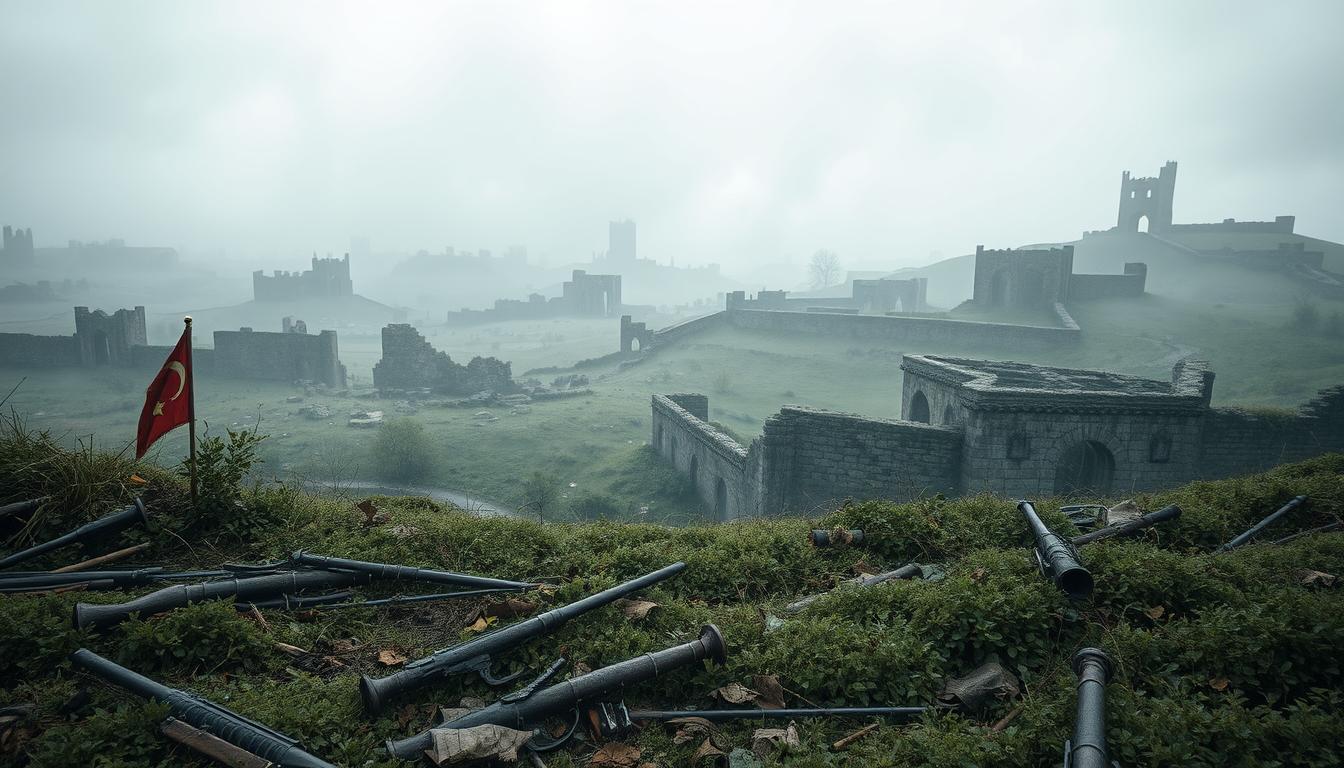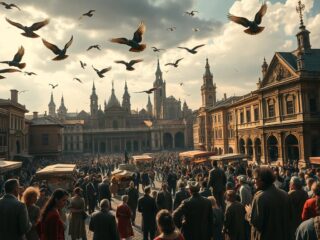In the shadows of history, some battles changed the world but are unknown to many. Imagine a battle that shifted global power, yet it’s barely mentioned in history books. These battles have quietly shaped our world in ways few grasp.
Forgotten battles are more than just fights. They are key moments where small groups changed big civilizations. They reshaped the world with victories that seemed impossible. Our hidden history is full of stories of bravery, strategy, and surprises.
From ancient times to recent battles, these overlooked fights give us deep insights. They show how nations grow, decline, and start anew. By looking into these battles, we gain a clearer view of world history.
Key Takeaways
- Obscure military conflicts often have profound historical impacts
- Small forces can dramatically change global power structures
- Hidden history reveals unexpected strategic turning points
- Military engagements shape civilizations beyond immediate outcomes
- Understanding forgotten battles provides deeper historical context
The Battle of Wadi Al-Khaznadar
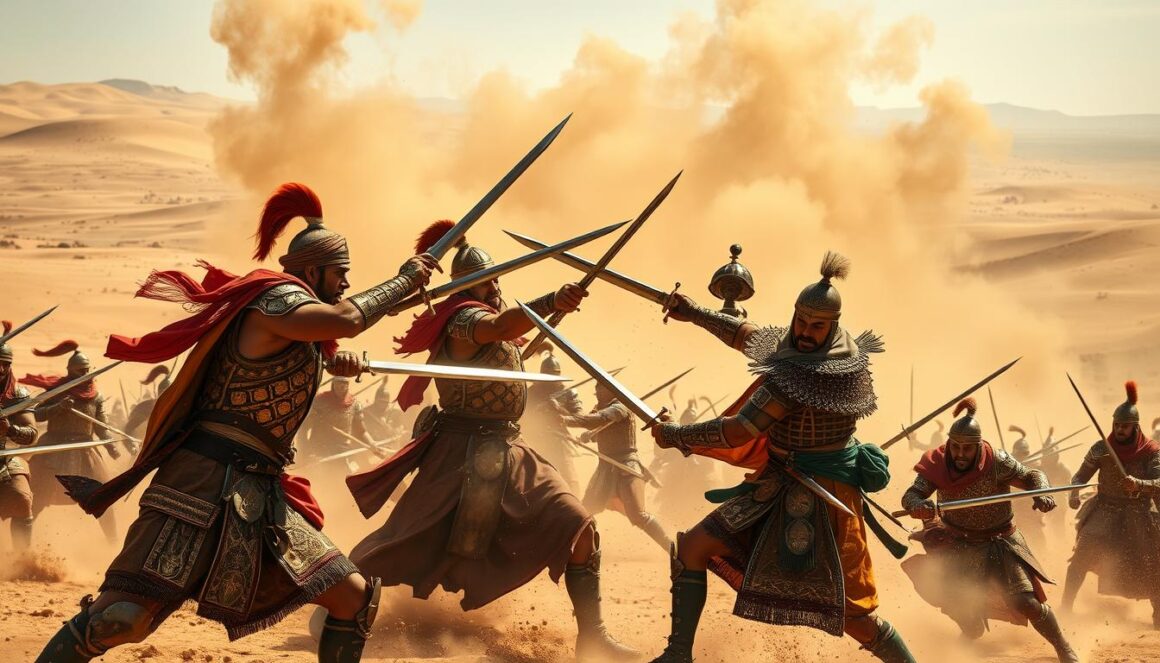
The Battle of Wadi Al-Khaznadar is a key moment in history. It shows how unsung war heroes can change the world. In 1299, the Mamluk Sultanate faced off against the Mongol Ilkhanate. This battle was a turning point in the medieval world.
Ghazan Khan led the Mongols into Syria, threatening the Mamluks. His army had about 20,000 soldiers, including Christians. The Mamluks, who had won at Ain Jalut in 1260, were ready to defend their lands.
The Mamluks used smart tactics. They knew the Mongols needed lots of land for their horses. So, they burned the grasslands and limited food. This made it hard for the Mongols to keep their horses.
The Mamluks won the battle, stopping the Mongols from taking more land. These heroes showed that smart tactics and knowing the land can beat big odds. Their victory saved Islamic civilization and kept the Mongols out of Africa and Europe.
The Battle of Dyrrhachium
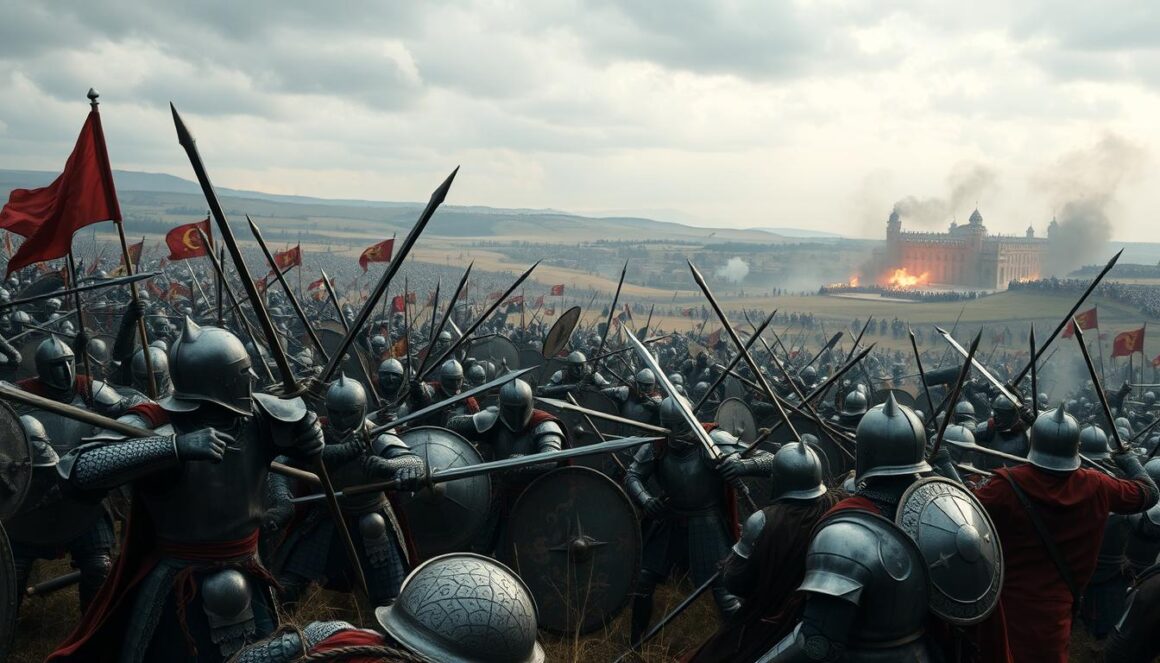
On October 18, 1081, a key moment in medieval warfare happened near today’s Durrës, Albania. The Battle of Dyrrhachium is a clear example of a forgotten war that changed southern Europe’s politics. Byzantine Emperor Alexios I Komnenos clashed with Robert Guiscard’s powerful Norman forces in a battle that would be remembered for ages.
The fight was intense, with about 20,000 Byzantine soldiers facing off against 15,000 Normans. This battle showed the Normans’ clever tactics, which won them the day. Their use of fake retreats surprised the Byzantines, leading to a Norman victory.
After the battle, about 5,000 Byzantines were killed, and 7,000 fled. The Normans’ win was a big blow to Byzantine power in the Balkans. It also opened doors for Norman growth, changing the balance of power in the eastern Mediterranean.
The Battle of Dyrrhachium shows how important forgotten battles can be. By studying these battles, we learn more about how medieval politics shifted.
The Battle of Kulikovo
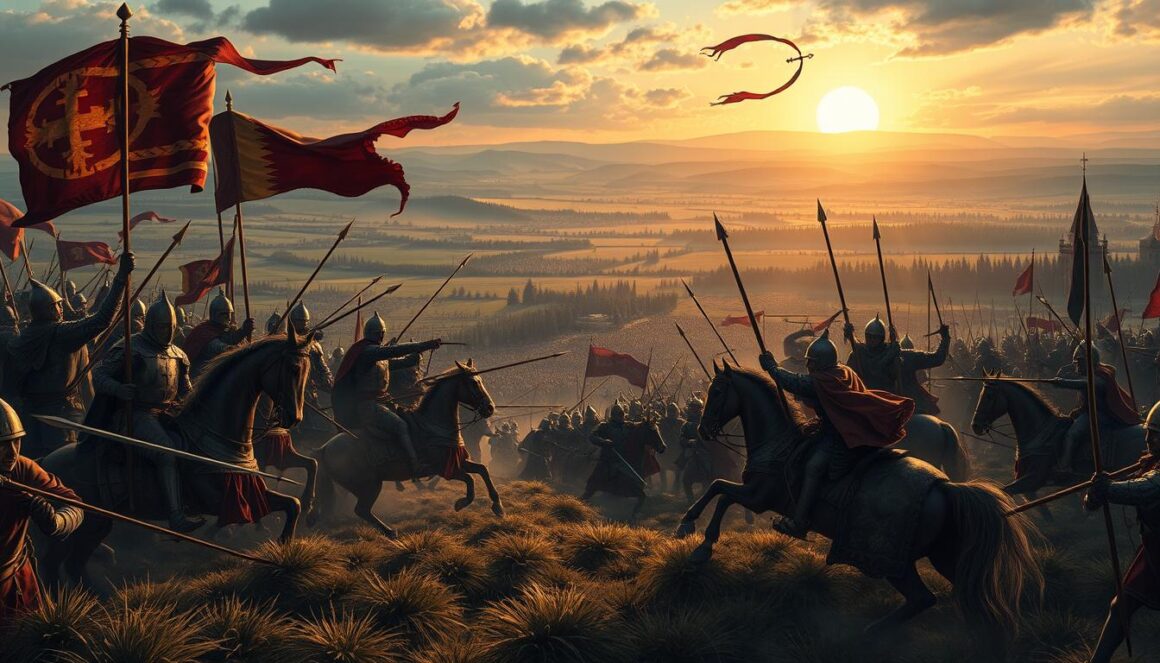
On September 8, 1380, a key moment happened near the Don River in Russia. The Battle of Kulikovo was a turning point against Mongol rule. It changed the Russian landscape forever.
Prince Dmitry Donskoy led 60,000 Russian troops against Mamai’s 125,000 Golden Horde soldiers. This battle was more than just fighting. It was about Russian resistance against long-time oppression.
The battle was intense. It lasted about three hours. There was a famous duel between Alexander Peresvet and Temir-Murza. Both warriors died, showing the battle’s fierce nature.
Dmitry’s strategy was smart. He united different Russian groups, including Lithuanians and Russified Tatars. This unity was key in fighting against Mongol rule that had lasted for 140 years.
Though the victory was big, it didn’t end Mongol rule right away. Tokhtamysh, the new leader, attacked Moscow two years later. But the Battle of Kulikovo was a big win. It inspired future generations and helped pave the way for Russian freedom.
The Battle of Cartagena De Indias
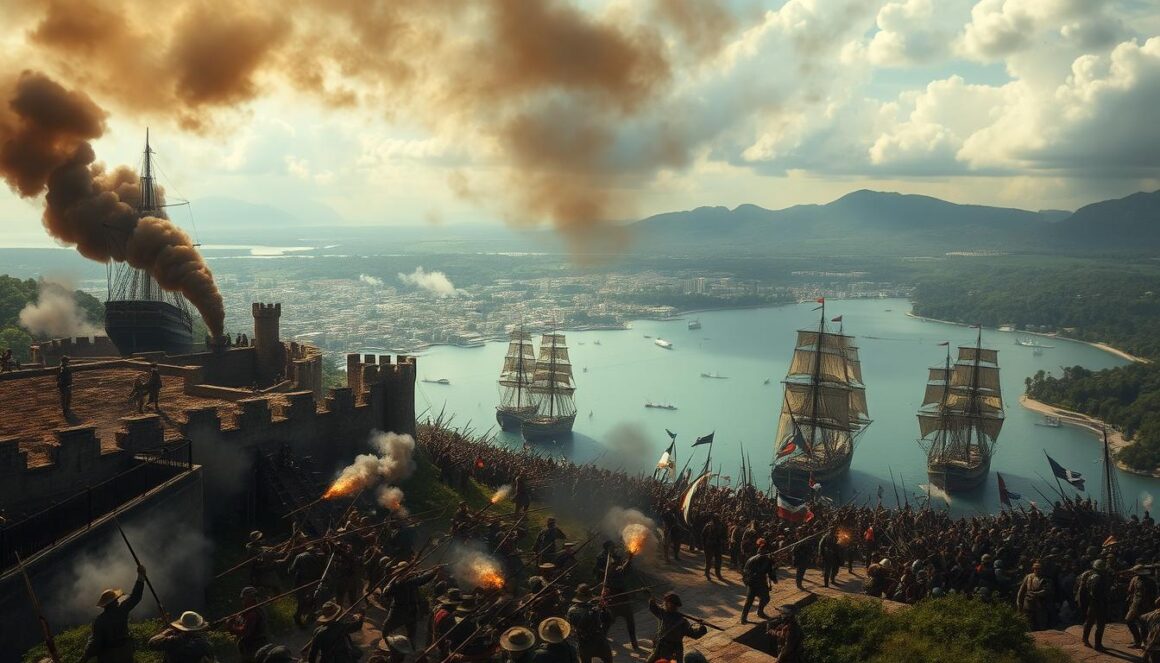
The Battle of Cartagena de Indias is a key moment in military history. It shows how defense and strategy can lead to victory. This battle between Britain and Spain in 1741 took place in the Caribbean.
Blas de Lezo, the Spanish commander, is a hero of this battle. He led a small force against the British, who had 30,000 troops. The Spanish used smart tactics and knew the land well to fight off the British.
The numbers tell a story of British defeat. Out of 30,000 troops, 90% died, mostly from sickness. The Spanish, with just 3,000-4,000 soldiers, caused huge losses to the British.
The city’s defenses were strong. It had 160 cannons along 11 kilometers of walls. The Castillo San Felipe fortress was a key part of these defenses. The British fleet of 124 ships and 2,000 cannons couldn’t break through.
This battle changed the balance of power in the colonies. It helped Spain keep control over American lands. It was a big win for Spain and a big loss for Britain. It showed that smart planning can beat big odds.
The Battle of Plassey
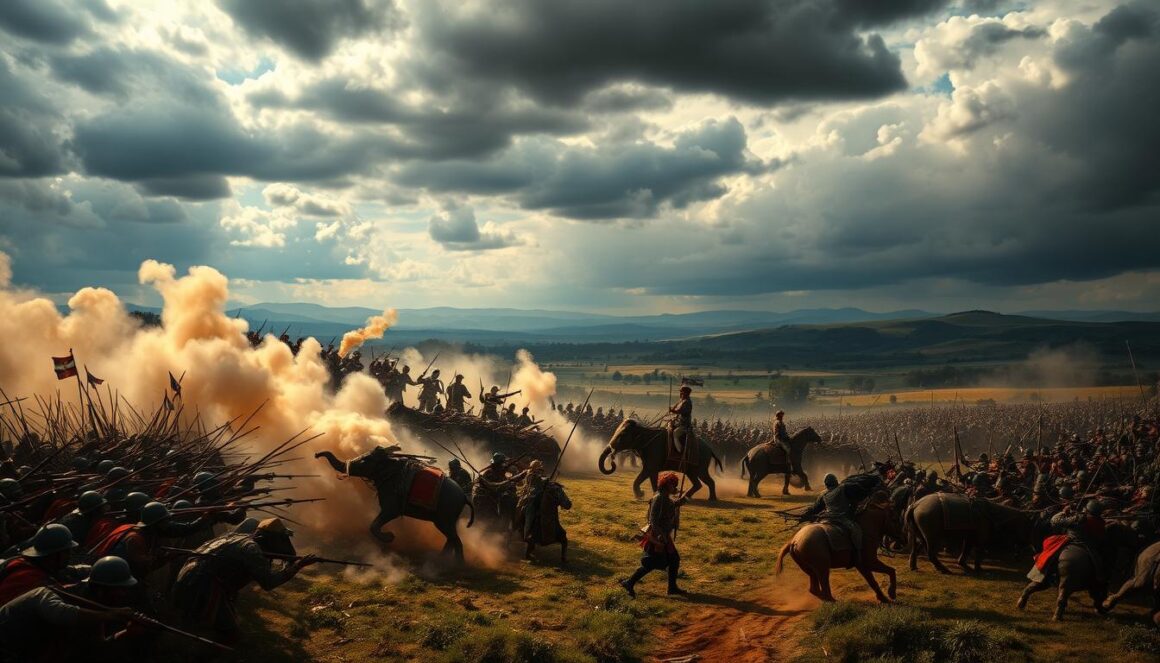
On June 23, 1757, a small battlefield near Calcutta saw a key moment in colonial history. The Battle of Plassey was a turning point for the Indian subcontinent. British forces, led by Robert Clive, had only 3,100 men.
They faced the Nawab Siraj ud-Daulah’s army, which had 50,000 soldiers and 53 field pieces. This battle was more than just fighting. It was about politics and betrayal.
Mir Jafar, a key commander, secretly worked with the British. This changed the battle’s outcome. Clive’s forces won, losing only 27 men and 50 wounded. The Nawab’s army lost 500.
The Battle of Plassey showed how a small force can change the world. The British East India Company became a territorial power. This led to nearly two centuries of British rule in India.
This battle’s impact was huge. It started British expansion in South Asia. It changed global politics for many years.
The Battle of Adwa
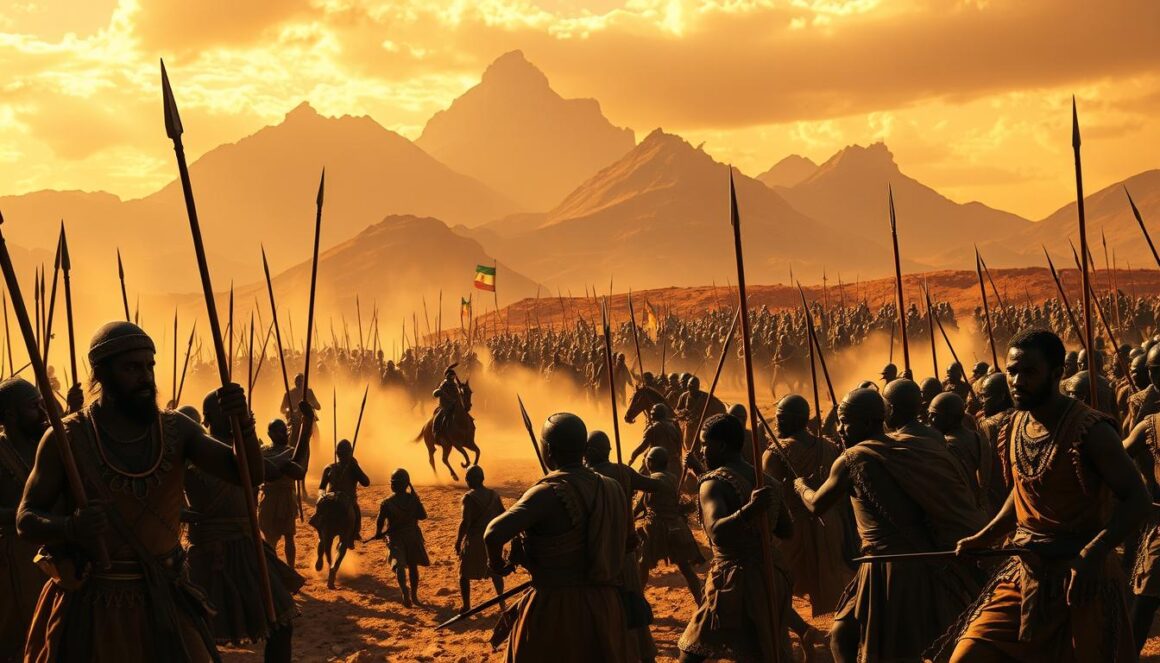
The Battle of Adwa is a remarkable story in African history. On March 1, 1896, Emperor Menelik II led Ethiopian forces to a stunning win against the Italian colonial army. This victory challenged the idea that Europeans were always the strongest.
This battle was a key moment in fighting against colonial expansion in Africa. Ethiopian troops, estimated at 100,000, faced about 14,500 Italian soldiers. The Ethiopians used their numbers and knowledge of the land to defeat the Italians.
The victory shocked the world. Italy lost around 6,000 soldiers, with nearly 3,865 captured. This win not only kept Ethiopia free but also showed African resistance against European rule.
Menelik II’s victory at Adwa was more than just a win. It broke the myth of European invincibility and inspired others to fight against colonialism. The battle showed that determination and strategy can beat technology.
The Battle of Adwa is a key moment in world history. It shows that even small nations can stand up against colonialism with unity, knowledge, and pride.
The Battle of Tsushima
The Battle of Tsushima is a key moment in naval history. It was a clash between Russia and Japan in 1905. This battle changed the world’s power balance in just two days.
Admiral Tōgō Heihachirō led Japan to a big win. He defeated the Russian Baltic Fleet, which had traveled 18,000 nautical miles from the Baltic Sea. This victory was a huge surprise to everyone.
The numbers show how intense the battle was: Japan had 4 battleships and 29 cruisers. Russia had 8 battleships. Japan’s speed and strategy won the day. Russia lost 11 battleships and over 5,000 sailors were killed or captured.
This battle was more than just a fight. It showed Japan was a world power. It proved an Asian nation could beat a European one. This change shook the world’s politics.
Wireless telegraphy was key in this battle. It made Tsushima a turning point in naval history. The Russian fleet’s total loss made Tsushima a key battle in history.
Wrapping Up: 7 Forgotten Battles That Shaped the Modern World
Our journey through these forgotten battles shows the complex history of our world. Each battle is more than a fight; they are stories of brave heroes who changed the world. From the Mamluks fighting the Mongols to Japan’s win at Tsushima, these moments show how small powers can change the world.
These battles are important for more than just their immediate impact. They show how strategy, leadership, and determination can win against big odds. They remind us that history’s turning points are complex, influenced by many factors.
By looking at these battles, we understand how our modern world came to be. The heroes of these battles were not just soldiers; they were the ones who shaped our world. Their stories encourage us to see history in a new light, beyond what we’ve been told.
Reflecting on these stories, we see the depth of human history. These battles show that big changes can come from small groups of brave people. Their stories teach us about resilience, innovation, and the power of action in the face of challenges.

